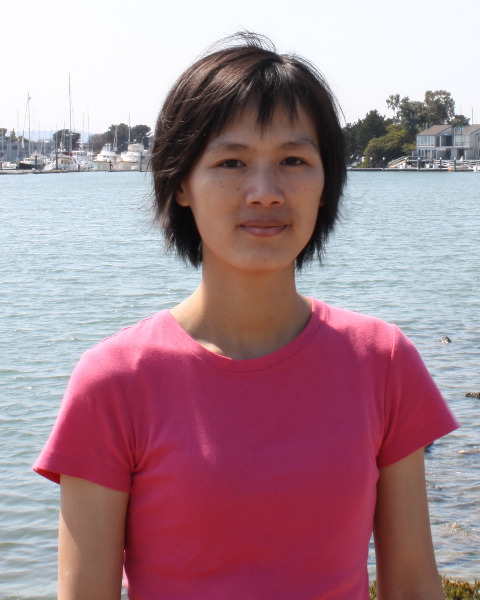Female Reproductive Tract
Poster Session C
(P-149) Lineage tracing of endometrial ALDH1A1+cells reveals their contribution to uterine development
Friday, July 19, 2024
8:00 AM - 9:45 AM IST
Room: The Forum

Suni Tang, PhD (she/her/hers)
Staff Scientist
Baylor College of Medicine
Houston, Texas, United States
Poster Presenter(s)
Abstract Authors: Suni Tang1,2; Ting Geng1,2; Anna C. Unser1,2; Linda A. Radilla3; Xiaoming Guan3; Timothy N. Dunn3,4; Diana Monsivais1,2
1. Department of Pathology & Immunology, Baylor College of Medicine, Houston, USA
2. Center for Drug Discovery, Baylor College of Medicine, Houston, USA
3. Department of Obstetrics and Gynecology, Baylor College of Medicine, Houston, USA
4. Division of Reproductive Endocrinology & Infertility, Baylor College of Medicine, Houston, USA
Abstract Text: Endometrial stem cells are thought to confer the endometrium with its unique regenerative potential, however, the identity and growth factors controlling stem cell regeneration are not well understood. The aldehyde dehydrogenase 1 (ALDH1A) family synthesizes retinoic acid and plays important roles during the embryonic development of the uterus. ALDH1A1+ cells are putative stem cell markers in normal and tumor tissues, however, their contribution to adult endometrial regeneration is not well characterized. Here, we examined ALDH1A1 expression in different ages of wild-type (WT) mice to visualize its expression during key timepoints in the uterus using immunohistochemistry (IHC). We also generated a new tamoxifen-inducible cre reporter mouse, Aldh1a1creERT2; Gt(ROSA)26SortdTomato (“Aldh1a1creERT2-tdTomato reporter mice”) to trace the fate of ALDH1A1+ cells during various timepoints in the neonatal and adult mouse uterus. IHC showed that ALDH1A1 was widely expressed in the WT mouse endometrial luminal epithelia at postnatal day 7 and further expanded to glandular epithelia at postnatal day 14; at 3 weeks, ALDH1A1 was restricted to the crypts of glands. In the adult uterus, ALDH1A1 was widely expressed in luminal and glandular epithelia during diestrus and was restricted to glandular crypts during estrus. Tracing in the Aldh1a1creERT2-tdTomato reporter mice from PND8 to PND14 detected ALDH1A1+ cells in the glandular crypts and luminal epithelium. Tracing in the adult uterus showed that ALDH1A1+ cells localized to the glandular crypts, luminal epithelium, and to a population of sub-epithelial stromal cells. These results suggest that ALDH1A1+ cells, which were enriched in the glandular crypts or sub-epithelial stroma, give rise to mature luminal epithelial cells in the adult. We also compared the organoid formation of ALDHLow and ALDHHigh cell populations of endometrial organoids from human endometrium. Human endometrial organoids contained approximately 7-18% of ALDHHigh cells (n=5) and ALDHHigh cells formed more organoids with larger diameters compared to ALDHLow cells, indicating that ALDHHigh endometrial cells are more proliferative and regenerative than ALDHLow cells. Overall, our results in mice and humans indicate that ALDH1A1+ cells are endometrial stem/progenitor cells that contribute to the development and regenerative potential of the endometrium.
Studies were supported by Eunice Kennedy Shriver National Institute of Child Health and Human Development (R01-HD105800) and the Burroughs Wellcome Fund Next Gen Pregnancy Award (NGP10125).
1. Department of Pathology & Immunology, Baylor College of Medicine, Houston, USA
2. Center for Drug Discovery, Baylor College of Medicine, Houston, USA
3. Department of Obstetrics and Gynecology, Baylor College of Medicine, Houston, USA
4. Division of Reproductive Endocrinology & Infertility, Baylor College of Medicine, Houston, USA
Abstract Text: Endometrial stem cells are thought to confer the endometrium with its unique regenerative potential, however, the identity and growth factors controlling stem cell regeneration are not well understood. The aldehyde dehydrogenase 1 (ALDH1A) family synthesizes retinoic acid and plays important roles during the embryonic development of the uterus. ALDH1A1+ cells are putative stem cell markers in normal and tumor tissues, however, their contribution to adult endometrial regeneration is not well characterized. Here, we examined ALDH1A1 expression in different ages of wild-type (WT) mice to visualize its expression during key timepoints in the uterus using immunohistochemistry (IHC). We also generated a new tamoxifen-inducible cre reporter mouse, Aldh1a1creERT2; Gt(ROSA)26SortdTomato (“Aldh1a1creERT2-tdTomato reporter mice”) to trace the fate of ALDH1A1+ cells during various timepoints in the neonatal and adult mouse uterus. IHC showed that ALDH1A1 was widely expressed in the WT mouse endometrial luminal epithelia at postnatal day 7 and further expanded to glandular epithelia at postnatal day 14; at 3 weeks, ALDH1A1 was restricted to the crypts of glands. In the adult uterus, ALDH1A1 was widely expressed in luminal and glandular epithelia during diestrus and was restricted to glandular crypts during estrus. Tracing in the Aldh1a1creERT2-tdTomato reporter mice from PND8 to PND14 detected ALDH1A1+ cells in the glandular crypts and luminal epithelium. Tracing in the adult uterus showed that ALDH1A1+ cells localized to the glandular crypts, luminal epithelium, and to a population of sub-epithelial stromal cells. These results suggest that ALDH1A1+ cells, which were enriched in the glandular crypts or sub-epithelial stroma, give rise to mature luminal epithelial cells in the adult. We also compared the organoid formation of ALDHLow and ALDHHigh cell populations of endometrial organoids from human endometrium. Human endometrial organoids contained approximately 7-18% of ALDHHigh cells (n=5) and ALDHHigh cells formed more organoids with larger diameters compared to ALDHLow cells, indicating that ALDHHigh endometrial cells are more proliferative and regenerative than ALDHLow cells. Overall, our results in mice and humans indicate that ALDH1A1+ cells are endometrial stem/progenitor cells that contribute to the development and regenerative potential of the endometrium.
Studies were supported by Eunice Kennedy Shriver National Institute of Child Health and Human Development (R01-HD105800) and the Burroughs Wellcome Fund Next Gen Pregnancy Award (NGP10125).
